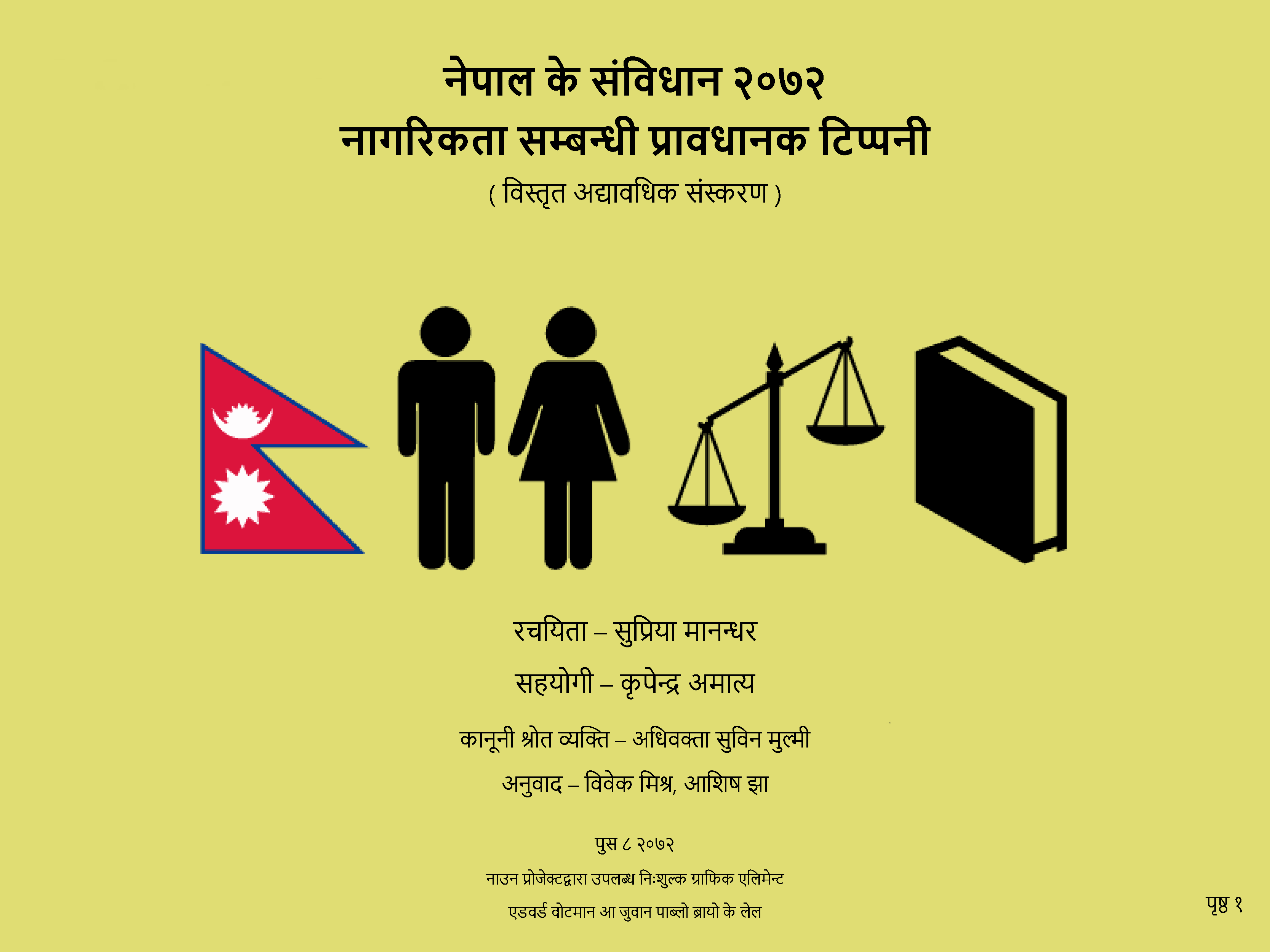There is no two questions about Nepal being a highly patriarchal society.
Economic and gender equality being one of the three main passions of mine — education and social justice being the other two — I have written many blog posts about how Nepal, not unlike many other countries I have lived in and visited, has been and continues to be a country by men, for men, at the expenses of not just the girls and women, but also at the country’s and the men’s! I have also spoken about it at a number of different venues.
Apart from poverty and our culture and tradition making life very very difficult for girls and women, driving an unhealthy number of them to choose death over life, the constitution promulgated last year on September 20, blatantly discriminates against women on the rights to pass on citizenship to children.
Reproduced below are a series of informative and very well made Maithili version of the info-graphs produced by Supriya Manandhar and her friends, about the provision, which originally appeared on Imgur. I am reproducing them images here with permission from Supriya.
According to the 2011 census report, Nepali is the mother tongue to less than 50% of the population.For a significant percentage of Nepalese living in the Southern Plains (the Terai), Maithili is their mother tongue! If they can’t read English, they can just ignore all this jumble I have written and still appreciate how discriminatory Nepal’s constitution is by just looking at the info-graphs!
(If, for whatever you came here but can’t read Maithili, for the English version, click here, or for the Nepali version here, or for the Newari version here.)
The following Al Jazeera video made by my friend Subina features a Constituent Assembly member who justifies the discriminatory provision by saying:
“Citizenship system in principal and practice is not the same in every country. It depends on the circumstances, legal provision and geopoliticis of different countries. So there should be no question at all how the Nepali people and Nepali state adopts the legal provision. There is no universal principle applicable to all countries.”
Sharing the video on Facebook, to clarify what he meant, I had commented:
“What he means by “Nepali people” above is Nepali men, mostly hill so-called high caste Hindu men, [roughly 10% of the population, if at that] NOT exactly Nepali people.”
Education, more than anything, has the potential to change this and that’s why I do what I do. Education will bring awareness, and then changes in attitudes and mentality and subsequently, changes in behavior. Sure, it will take a long time, most likely longer than a lifetime, but there is no short-cut!
References
The 2072 Constitution of Nepal, the Nepalese version.
The 2072 Constitution of Nepal, the English version, translated by Nepal Law Society.
National Population and Housing Census 2011.

